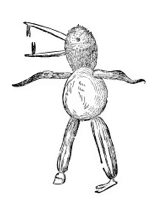Eight Questions with Ada Limón
1. What is your first memory, real or imagined?
I think my first memory is of the leaves of trees from the back seat of the car, out the window. The blur of light and leaves speeding past and creating numerous patterns over everything. The oaks and the light that was shooting through them. Afternoon light, late summer or fall, everything gold and shadows and green, always green.
2. Is there a sentence (from anything or anywhere) you especially like?
I love this sentence by Carl Phillips in The Art of Daring, "Who can say which is better, the glory of foliage or the truth of what's left when the leaves fall away."
3. Is there a visual artist whose work you presently have on you mind or a visual artist who in the past has been important to your work?
Frida Kahlo and Georgia O'Keeffe were huge early influences on me because my mother loved them and had large books of their paintings in her studio. I used to flip through them and stare at the paintings until they became animated films, alive and moving through the world with me. I am, to this day, grateful for their work and for the path they paved.
I think a lot about the work of Dario Robleto now. His work is as interested in the material elements that make up the final pieces as he is the finished presentation. His sculptures remind me of poems, spells, incantations. The object are alive, energy is everywhere. He'll work with stretched audio tape of various heartbeats and sea urchin teeth and you'll see how the elements, the ingredients, are each as weighted and as vibrating as the completed work.
http://www.dariorobleto.com/works/311
4. Will you describe a scene from a movie that you think about often?
The opening scene of Who's Afraid of Virginia Woolf when Elizabeth Taylor walks in with Richard Burton and she starts to quote Bette Davis and says, "What a dump!" It's such a freaky marvelous scene. Taylor is smoking and eating a cold chicken wing out of the fridge, they are both drunk, and she keeps repeating the line and asking, "What's the name of the picture?" I don't know what it is but I still think that might be the truest thing I've ever seen on film. And then there's a moment when she sighs after going through this huge reenactment of the scene and says a little quieter with her hand on her hip, "She's discontent." It slays me. Breaks me in two.
5. What is a favorite piece of literature in translation?
Easy, it's the poem "The Wild Strawberry" by Gabriela Mistral, translated by Maria Giachetti in Gabriela Mistral: A Reader (White Pine Press, 1993).
6. Tell us about a word's etymology that interests you.
Treacle. I love that it means too sweet or sentimental now, but it began as an antidote for poison.
7. What song do you like to listen to in transit, i.e., while walking, driving, on the subway?
I love listening to Yola's "Ride Out in the Country" while I'm driving. And Joan Armatrading's, "I Like It When We're Together" while I'm flying.
8. Tell us about a poem that presently has you excited or perhaps a poem that is always on your mind.
I think a great deal about "Thanks" by W.S. Merwin. It circles in me always. When I have given up on praising the world. That poem reminds me to keep praising. "Dark though it is."



